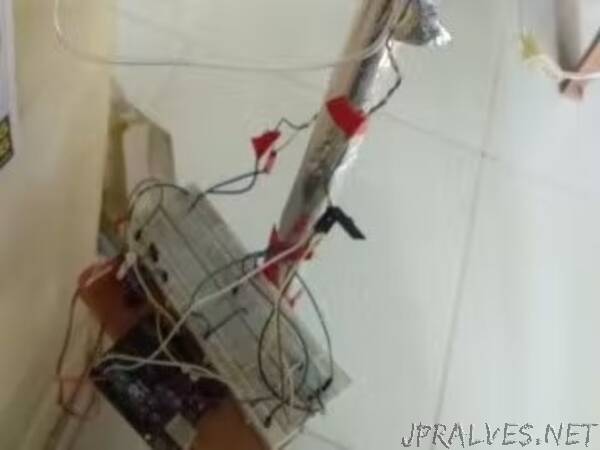
“Develop a device which detects the level of fluid in the electrolyte bottle and capable of sending notification to the nurse station.
Story
In hospitals, ICU, CCU, NICU, OT, most of the departments have patients connected to an electrolyte bottle. An assist is responsible for monitoring of the bottle. But unfortunately, due to their busy schedule, the observer may forget to change the bottle at the correct time. If the bottle is not changed, there is a fatal risk of air bubbles entering the patient’s bloodstream, which even causes immediate death. Main aim is to develop a device which detects the level of fluid in the electrolyte bottle and capable of sending notification to the nurse station and to control the flow of the electrolyte solution from the nurse station by using a common console. Such device will create assurity of non-harm conditions to patients and also helpful to monitoring of data and such data can be stored and will be useful in future. IR sensor is used to detect the level of drip bottle. This sensor is connected to microcontroller to monitor and alert the assist by the use of ESP8266 Wi-Fi module to the Blynk application. It also has features to control the rate of fluid flow from the common console.
Backflow of Blood: The pressure inside vein at least temporarily overcomes the pressure inside the IV, allowing blood to back flow into the line. Once the IV empties, that part of the tube hanging down over the side of the bed now has no force of gravity working on it. Therefore, as shown in image blood can come back out of your arm down into the tube.
A blood clot or other solid mass, as well as an air bubble, can be delivered into the circulation through an IV and end up blocking a vessel this is called embolism. Air bubbles of less than 30 micro liters are thought to dissolve into the circulation harmlessly. A larger amount of air, if delivered all at once, can cause life threatening damage, or, if extremely large (3-8 milliliters per kilogram of body weight), can stop the heart.
In order to detect the amount of fluid remaining in the electrolyte bottle, we designed an IR circuit that has an IR LED and a photodiode to detect the light. We concluded that if the sensor is placed at the position where the fluid is, the output of the IR photodiode is HIGH. We used 3 IR sensors at particular levels. These IR Sensor value is fed to the microcontroller (Arduino UNO). From the microcontroller we used wireless transmission to the smartphone of caretaker. The wireless transmission was achieved using ESP8266 (1) module, which is a Wi-Fi module using TCP/IP protocol. The term Internet of Things(IoT) refers to controlling all electronic appliances over an android phone. The Blynk software is currently used as the front-end for the caretakers to notify the level of electrolyte level. We add on a servo motor to control the flow of the electrolyte from the bottle. The slider in the Blynk app is used to control the angle of the servo. The application of servomotor in our project is to compress the IV tube whenever we require. The motor can be controlled from the Blynk app by use of slider. The motor automatically compresses the tube if the fluid is in critical level.
The results are interpreted in the Blynk app. The IR circuit is placed in 3 positions such that at levels of 50, 10, 5percentages respectively. The IR circuit will give a reading according to the level of the electrolyte remaining in the bottle.
The Critical message that only 5% of fluid is left (image2). These values are given to the microcontroller(Arduino UNO). When the microcontroller gets a signal from the IR circuit that is placed at the 10% mark, the microcontroller alerts the nurse station by a warning message. If the microcontroller encounters a signal from the IR circuit at 5% mark, then the nurse station will get critical alert with the bed number of the patient. Then an automated servo powered motor will compress the tube leaving no flow of the electrolyte. The nurses can control the flow of the electrolyte to the particular person according to their condition from the nurse station itself. The Blynk app will display the IR value of respective IR circuit; it also gives a notification at 10% and5%. The slider option will allow nurses to control the flow of the electrolyte by controlling the movement of servo motor”
